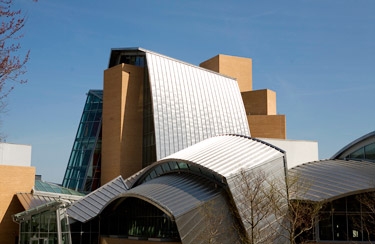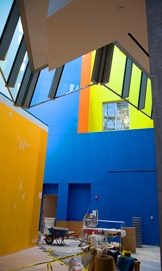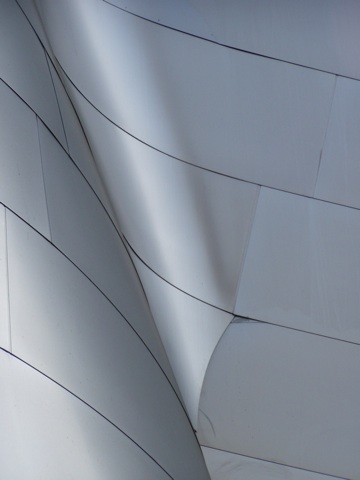
[Image via Princeton University]
Frank O. Gehry‘s new building at Princeton University – the Lewis Library – is nearing completion. Princeton’s website has an article describing the new building and giving us a sneak peak inside.
[Image via Princeton University]
I hate to prejudge this building, but from the pictures, I worry that this is going to be even worse of an occupant experience than MIT’s Stata Center. The bright contrasting colors of the interior and the sharp dramatic angles seem to go one step beyond the Stata, which looked like it was falling down, instead, the exterior of the Lewis Library looks like a jumble of child’s block swept under a rug and the inside looks like something from a medieval view of hell. In addition, from what we can see in the photographs and what has been installed already, there seems to be a lot of hard surfaces with little acoustic dampening (a problem at the Stata as well). The article makes the claim that the third and fourth floors of the building’s tower will be the quietest places on campus, but i have to wonder about the rest of the building. As far as the exterior goes, it seems to be a natural progression in Gehry’s work. The obvious influences are the Stata center and the disney concert hall as well, but there are more subtle influences here as well. I can see shades of Chiat Day in the volumetric massing and even some of his Gehry house in Santa Monica in the delaminating of the skin from the building and subverting of building conventions.
The thing that I find the most compelling is that when taken as a series this building, Bilbao, the Stata Center, and the Disney Concert hall you can see the progression of how GehryPartners designs – they create volumes and then wrap them in a skin. Bilbao and Disney are both skin-type buildings, Stata is a volume building. The Lewis Library is the closest thing to a hybrid showing both volumes of program and a steel wrapped skin. In two years, after this building has been open and inhabited for a while and has had its due in the architectural magazines we will see what the verdict is n this building.

